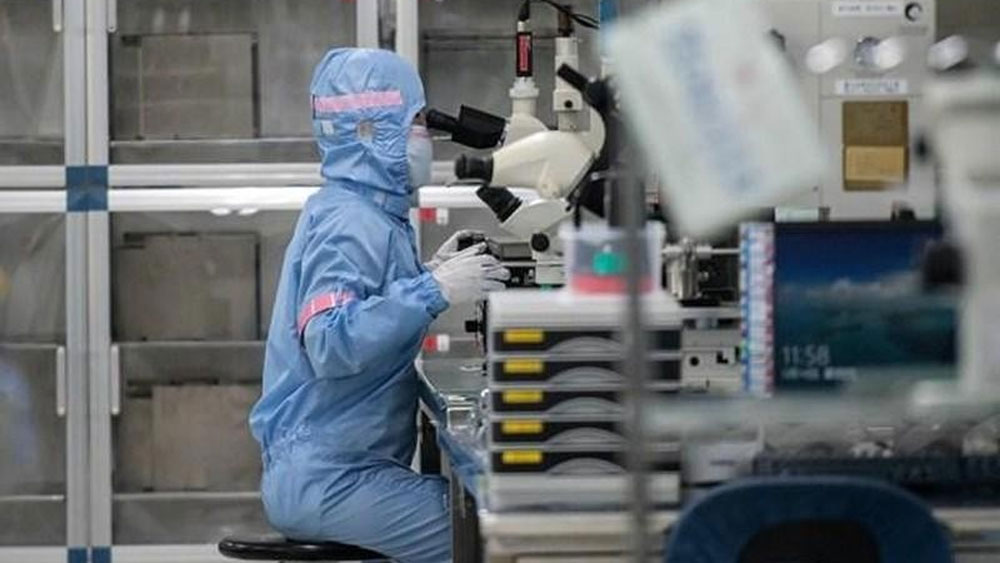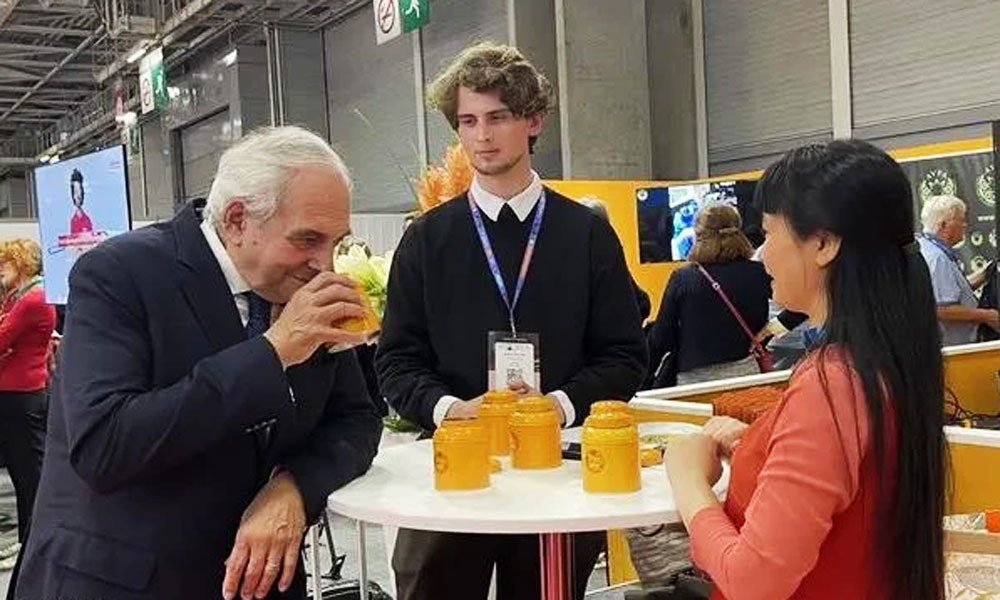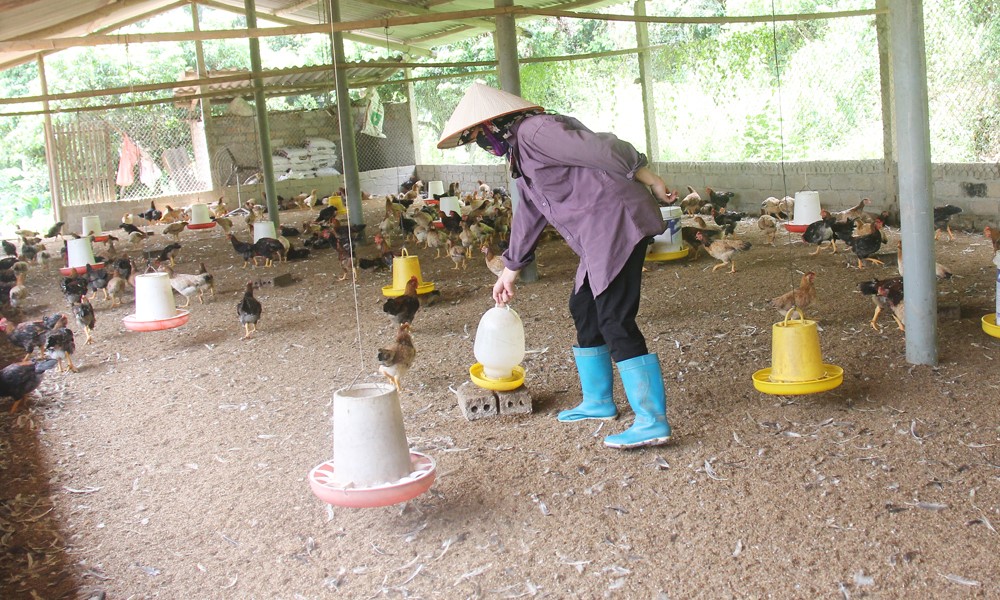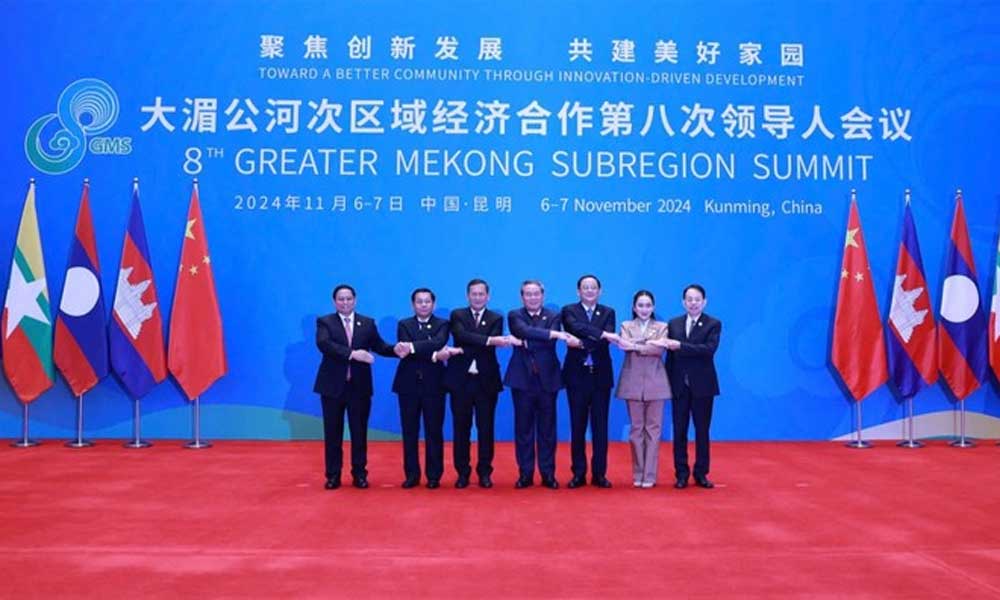The global race to produce semiconductors
A global shortage of semiconductors, driven by increased demand for consumer electronics during the pandemic, has disrupted supply chains and forced manufacturers to cut output, especially car and electronics manufacturers. Therefore, autonomy in the semiconductor industry has become a matter of vital importance for most economies. Accordingly, the EU launched a 43 billion EUR plan, called the Chip Act in 2022, which aims to double Europe’s market share of the semiconductor market by 2030, to reduce dependence on supply from Asia.
 |
|
Lasertec's chip production line. |
Europe’s leading economies, Germany and France, have both shown their determination to pioneer semiconductor production. Speaking at the closing of the Digital Summit that took place in Berlin, German Chancellor O.Scholz emphasised that Germany wants to become a major European semiconductor producer. The German leader stressed that the country needs to take the lead in rebuilding a competitive semiconductor manufacturing industry and that Germany should not depend on other countries regarding cloud computing, artificial intelligence (AI) and telecommunications infrastructure.
Earlier, German chip maker Infineon announced plans to build a new factory worth 5 billion EUR in Dresden. The new factory, scheduled to open in the fall of 2026, is expected to create up to 1,000 jobs and receive appropriate support from the public budget.
Another EU member, France, has also spent tens of billions of USD on the France 2030 plan, which focuses on developing the semiconductor industry. The French President recently announced the France 2030 plan, which plans to invest 54 billion EUR over the next 10 years, to support industrialisation and innovation. According to a French government report, the country has increased financial support for 810 projects in 2021, including the construction of a semiconductor factory, the development of hydrogen technologies and the production of quantum computers.
Meanwhile, the US continues large investments in the field, to maintain its leading position in the world of the semiconductor industry. The United States has recently implemented the semiconductor chip production subsidy law. US President Joe Biden signed an executive order on implementing the semiconductor chip research and subsidy law, worth nearly 53 billion USD.
According to the White House, President Biden’s executive order sets out six key priorities to guide implementation and establishes a 16-member interagency CHIPS implementation council. In addition, the law will also pour 200 billion USD over 10 years, to promote US scientific research activities to better compete with China. President Biden expressed his hope that the bill will help America win the economic competition in the 21st century.
In October, IBM pledged to invest 20 billion USD in its facilities in New York, with a focus on breakthroughs in semiconductor, mainframe, quantum computing, and artificial intelligence (AI) technologies.
In Asia, developed economies such as Japan and the Republic of Korea have also stepped up investment and international cooperation, to maintain their position as the leading chip manufacturers of the continent and the world. The Ministry of Trade, Industry and Energy of the Republic of Korea, said that the country will give many tax incentives and financial support to domestic semiconductor chip manufacturers, and support the training of 150,000 experts in the field.
Specifically, by 2029, the Republic of Korea will invest 1.25 trillion won, to develop the AI semiconductor industry and 1.5 trillion won to support the domestic “Fabless” semiconductor industry (specialising in design but not manufacturing chips). The government’s goal is to make the Republic of Korea a “global superpower in the semiconductor industry”.
Notably, some countries such as China and India are also accelerating and actively participating in the global “semiconductor race”. As Washington ramps up measures to limit Beijing’s ability to produce advanced chips, Chinese companies have been working hard to produce chips domestically, to avoid disruptions caused by foreign suppliers and have achieved remarkable progress.
The South China Morning Post recently reported that TechInsight believes that China’s largest semiconductor foundry, SMIC, is likely to be able to produce advanced 7 nm chips. SMIC is increasing its foundry capacity and plans to build the fourth factory in Tianjin. According to data from the US National Science Foundation, China spent as much as 708 billion USD on research and development (R&D) in 2020.
Along with China, India is also strongly involved in the global semiconductor chip supply chain. Last September, the Indian government announced it would subsidise semiconductor factories 50% of the cost of building packaging facilities. The announcement came as Prime Minister Narendra Modi’s government is trying to attract 10 billion USD to boost semiconductor and display production.
Recently, India’s conglomerate Vedanta and Chinese Taiwan’s Foxconn technology group signed an agreement with the government of Gujarat state (western India), to invest 19.5 billion USD to establish semiconductor and display manufacturing plants.
So far, the Indian government’s plan to encourage semiconductor production has been successful, attracting many investors, such as Singapore’s IGSS Ventures, which announced an investment of 3.2 billion USD for chip production in the state of Tamil Nadu. UAE’s NextOrbit and Israel’s Tower Semiconductor signed an agreement to build a 2.9 billion USD plant in Karnataka state. The Indian government said it would extend incentives beyond the initial 10 billion USD plan, to enterprises investing in the production of semiconductors.
Semiconductor technology and chips are now seen as the lifeblood of the modern economy and the key to unlocking future technological breakthroughs. Therefore, the semiconductor race between major economies is creating a driving force for the strong development of the global semiconductor industry. However, if the competition is not fair and big countries use their superior technological capabilities to exercise “technological hegemony”, this will pose risks to economic development and hinder technological development for the sake of civilisation and human progress.
Source: NDO
 Bắc giang
Bắc giang













Reader's comments (0)